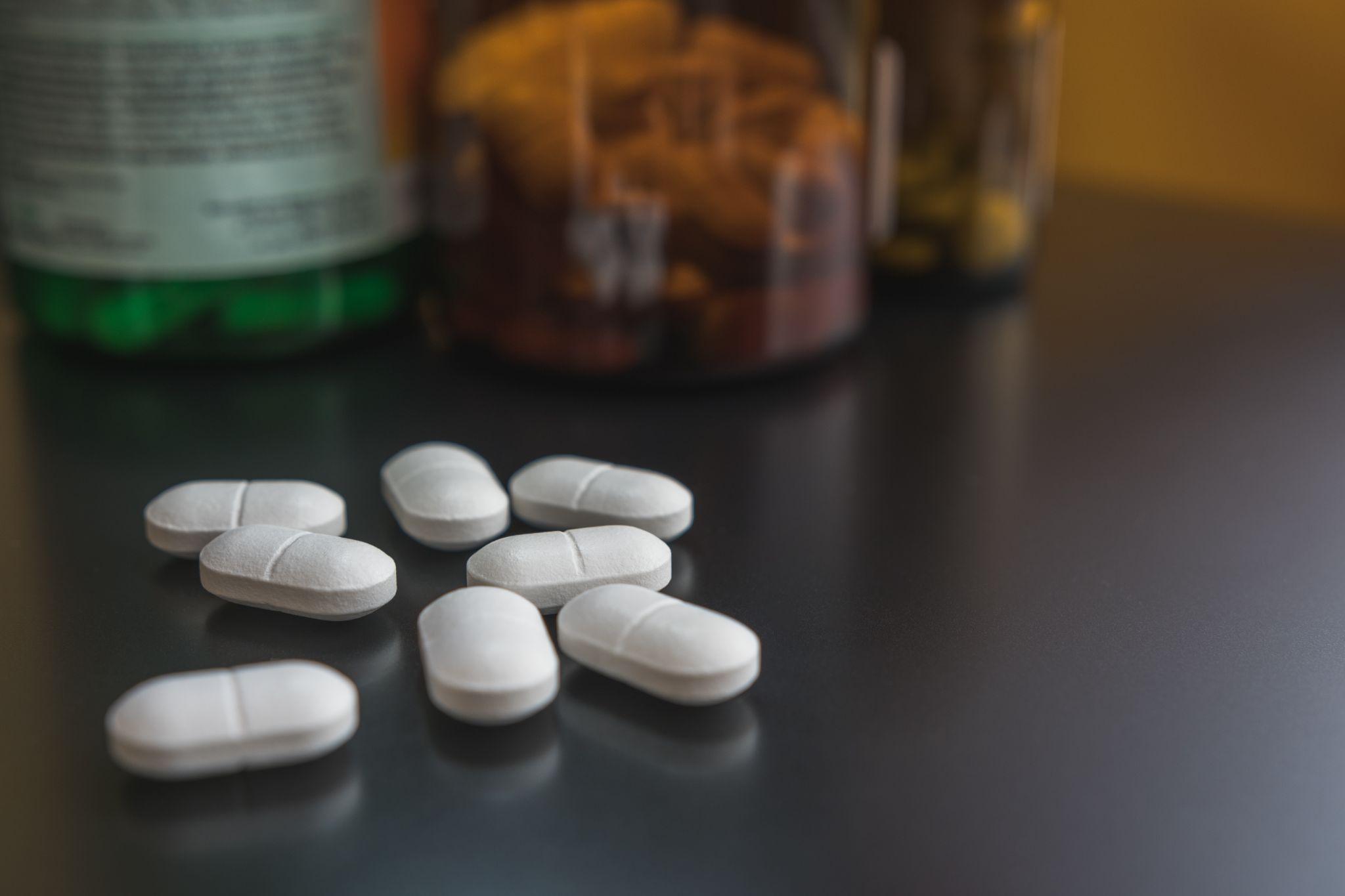The opioid crisis is a significant public health issue that affects millions of people worldwide. Synthetic opioids, in particular, have played a substantial role in the escalation of this crisis.
For individuals struggling with addiction or concerned loved ones, it is crucial to understand synthetic opioids. This knowledge can help in recognizing the signs of misuse, understanding the risks involved, and finding appropriate treatment options.
Overview of Synthetic Opioids
Synthetic opioids are a class of drugs designed to mimic the pain-relieving properties of natural opioids. These substances are created through chemical synthesis in laboratories, which allows for greater control over their potency and effects.1
Synthetic opioids are commonly prescribed for pain management, especially in cases of severe pain where other painkillers may not be effective. However, their high potency also means they carry a significant risk of misuse, addiction, and overdose.
The development of synthetic opioids has been driven by the need for more effective pain management solutions. In medical settings, prescription opioids can be invaluable for patients undergoing surgery, dealing with chronic pain, or receiving palliative care.
However, the same properties that make synthetic opioids effective painkillers also make them highly addictive. When misused, they can quickly lead to physical dependence and addiction.
Synthetic vs. Natural Opioids
Natural opioids, also known as opiates, are derived directly from the opium poppy plant. Examples include different forms of morphine and codeine. These substances have been used for centuries for their pain-relieving properties. While effective, natural opioids also carry a risk of addiction and other side effects.2
In contrast, synthetic opioids are entirely man-made. They include substances like fentanyl, methadone, and tramadol. Synthetic opioids are often much stronger than natural opioids, leading to increased effectiveness in pain management. However, this increased potency also means a higher risk of addiction, and even fatal overdose.
Examples of Synthetic Opioids
To better understand synthetic opioids and their impact, it’s helpful to look at some specific examples of these drugs, each with its own characteristics and uses.
- Fentanyl: Being 100 times more potent than morphine, fentanyl is one of the most potent synthetic opioids and is often used in severe pain management, such as for cancer patients or during surgery. However, it is also notorious for its role in overdose deaths. Illicitly manufactured fentanyl is often mixed with other drugs, significantly increasing the risk of accidental overdose.
- Methadone: Methadone is used both for pain management and in the treatment of opioid use disorder. It helps reduce withdrawal symptoms and cravings in people addicted to opioids. Methadone maintenance therapy is a well-established treatment for opioid addiction, allowing individuals to stabilize their lives and reduce illicit drug use.
- Tramadol: Tramadol is a less potent synthetic opioid used for moderate to moderately severe pain. It has a lower risk of addiction compared to stronger opioids but can still be misused. Tramadol is unique in that it also inhibits the reuptake of serotonin and norepinephrine, contributing to its pain-relieving effects.
- Oxycodone: A powerful pain reliever commonly prescribed for severe pain, oxycodone is effective but also frequently misused. It is available in various formulations, including combination products with non-opioid painkillers like acetaminophen. Oxycodone’s high potential for abuse and addiction has made it a focus of efforts to curb opioid misuse.
- Buprenorphine: Used in addiction treatment, buprenorphine helps manage withdrawal symptoms and cravings. It has a ceiling effect, which means its opioid effects level off at higher doses, thereby reducing the risk of misuse and overdose. Buprenorphine is often used in combination with naloxone to further reduce the potential for misuse.
Typical Effects of Synthetic Opioids
These drugs, designed to mimic the pain-relieving properties of natural opioids, can have a range of physical and psychological effects. While they are highly effective in managing severe pain, their potency also means they come with significant risks.
The effects of synthetic opioids can vary based on the specific drug and dosage but generally include:1
- Pain Relief
- Euphoria
- Drowsiness
- Confusion
- Urinary Retention
- Respiratory Depression
- Nausea and Vomiting
- Tolerance and Dependence
Overdose Effects
Individuals experiencing an overdose may exhibit a range of symptoms, which often include a specific triad of coma, pinpoint pupils, and respiratory depression, strongly indicative of opioid poisoning, as well as:1
- Stupor
- Cold and clammy skin
- Cyanosis (bluish discoloration of the skin)
Nasal sprays containing naloxone can be a life-saving measure in the event of an opioid overdose. Naloxone is an opioid antagonist that rapidly reverses the effects of an overdose by attaching to opioid receptors, blocking and reversing the impact of opioid drugs like heroin, fentanyl, oxycodone, hydrocodone, codeine, and morphine.3
Narcan is the first over-the-counter (OTC) and FDA-approved pre-filled nasal spray that is easy to use for bystanders or loved ones. When administered, the naloxone drug can quickly restore normal breathing in a person whose breathing has slowed or stopped due to an overdose.
How to Get Help for Synthetic Opioid Addiction
Recognizing the need for help is the first step towards recovery from synthetic opioid addiction. Here are some key steps and resources for those seeking help:
1. Acknowledge the Problem
Acknowledging a problem with synthetic opioid use is crucial. This can be difficult, but it’s important to understand that addiction is a medical condition that requires treatment. Denial can delay seeking help, worsening the situation.
2. Seek Professional Help
Addiction to synthetic opioids often requires professional intervention. Medically assisted detoxification is a supervised process that can help manage withdrawal symptoms safely and is often the first step in the treatment process.
Rehabilitation programs, both inpatient and outpatient, provide structured environments for recovery, offering a combination of medical treatment, counseling, and support groups.
Medication-assisted treatment (MAT), using medications like methadone, buprenorphine, and naltrexone, can help reduce cravings and withdrawal symptoms, often in conjunction with counseling and behavioral therapies.
3. Support Groups
Support groups offer a sense of community and shared experience, providing a platform for individuals to share their stories, receive encouragement, and learn from others who have faced similar challenges.
4. Build a Support Network
Having a strong support network is vital for recovery. This includes family, friends, healthcare providers, and other individuals in recovery. Open communication with loved ones can provide emotional support and encouragement throughout the recovery process.
5. Develop Healthy Habits
Creating a healthy lifestyle can support recovery and prevent relapse. Engaging in regular physical activity can improve mood and reduce stress. Maintaining a balanced diet supports overall health and well-being. Practicing mindfulness and relaxation techniques, such as yoga, meditation, and deep breathing, can help manage stress and anxiety.
Find Help for Synthetic Opioid Addiction With Lumina Recovery
Understanding synthetic opioids is crucial in addressing the ongoing opioid crisis. By recognizing the differences between synthetic and natural opioids, identifying common examples, and being aware of their effects, individuals and their loved ones can make informed decisions about their use and seek appropriate help when needed.
Lumina Recovery offers comprehensive opioid and fentanyl addiction treatment programs that combine medical, therapeutic, and supportive care tailored to individual needs.
If you or someone you know is struggling with opioid addiction, reach out to our team of professionals for support and guidance.
Sources:



